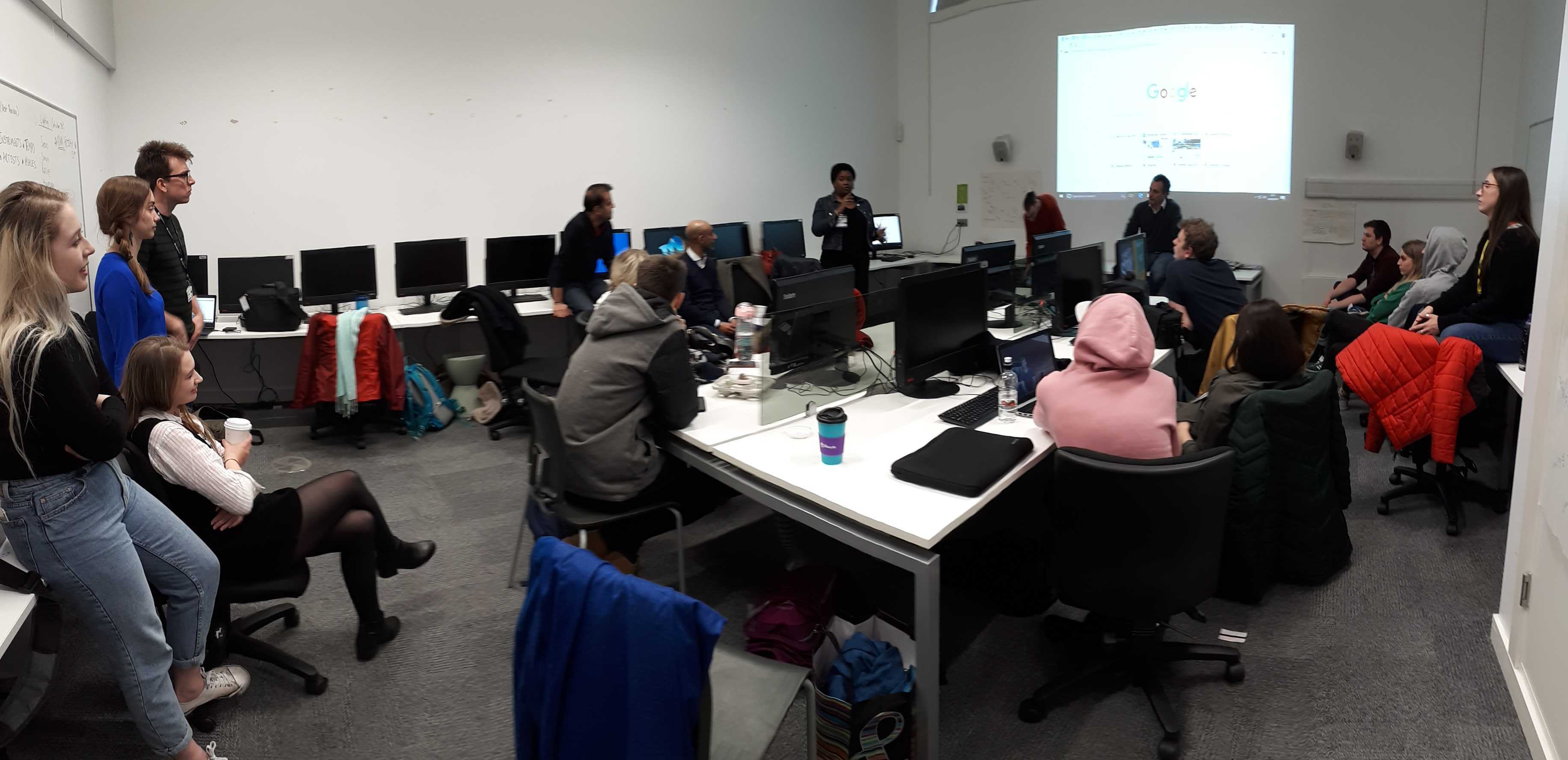Talking Television

I recently received an invitation to review the work of two groups of journalism students from Leicester’s De Montfort University (DMU) and Birmingham City University (BCU). I wasn’t sure what to expect before I got there, but the experience turned out to be both rewarding and very enjoyable.
The Task
The group had three days to find a story and gather the material to produce four television packages, Instagram stories, dataviz Twitter threads and a Facebook Live.
My input began at the end of the students’ creative journeys. My first impression was how hard everyone had worked and the many obstacles along that road that they found themselves having to overcome as part of the process of delivering the finished product. Grenfell, air pollution and the Birmingham parents objecting to LGBT lessons in the school curriculum were among the topics covered.
The Challenges
One of the enduring lessons from crafting television news packages is that the finished product tends to give viewers the impression of ease and simplicity. As a former television reporter, I know that nothing is further from the truth. News gathering takes an incredible amount of donkey work. First, unearth a good story. Next, find good engaging interviewees, persuade them to take part, do your best to help them deliver an engaging and succinct contribution – once the camera is running, come up with and capture footage to illustrate the story. And lastly, against the clock, deliver compelling television, possibly including a natural and confident piece to camera. It’s no mean feat.
The students came up against all those obstacles – equipment fails, background noise, potential contributors not responding, or pulling out unexpectedly. Others proved to be a lot less engaging on camera than during initial phone conversations. It’s also easy to underestimate how time consuming it is getting from one filming location to another, conducting the interview, packing up and repeating. Panic increases as the clock ticks nearer your deadline. I was pleased to be able to tell everyone that, no, they are not alone. We’ve all been through this. Planning is key.
Despite these obstacles, the groups’ resistance resilience and determination were impressive. Everyone managed to deliver news stories. One seemed as good as transmission ready minus a few tweaks. The interviews were snappy and engaging. Another team managed to find a significant exclusive to the Grenfell story and to reflect some of the reverberations for other tower block residents. There were some great vox pops – a seriously difficult skill to master. I learned something new about the ‘No Outsiders’ LGBT lessons story – zealots prepared to put aside religious differences to form a kind of axis of bigotry.
Looking To The Future
I had a lot of fun sharing my insights with the students and sincerely hope they found my input constructive. Having been out of news reporting for some years now, it was funny to see how little had changed in best practice for good journalism. The technology we use to capture, convey and distribute that information has made leaps and bounds but what comprises a good news package has endured across the years, as have audience’s expectations. I, for one, am encouraged by the work I saw from the DMU and BCU students and incredibly optimistic about the next generation of journalists.
